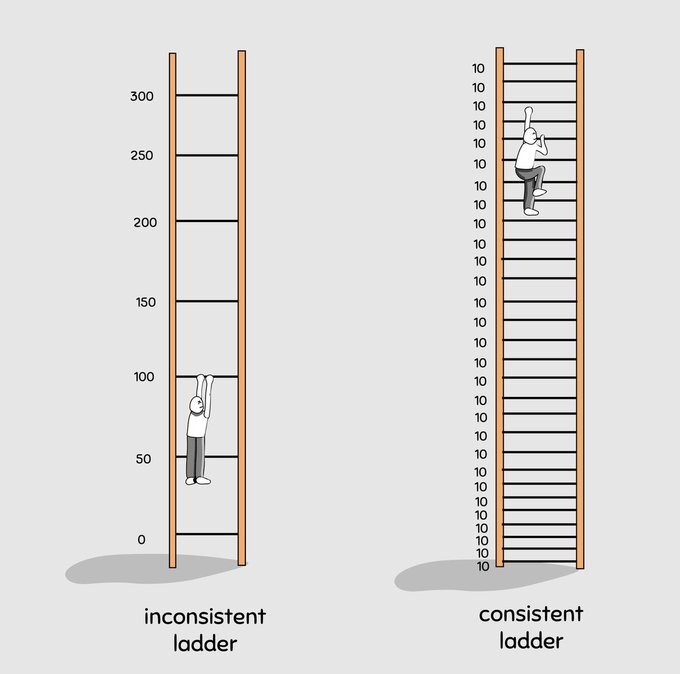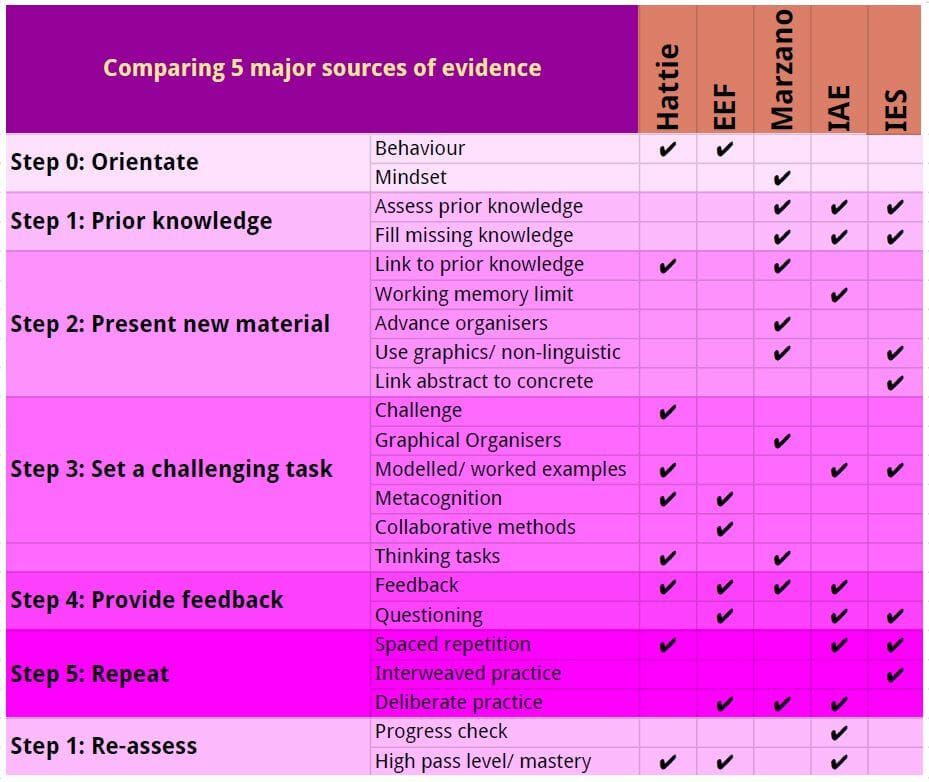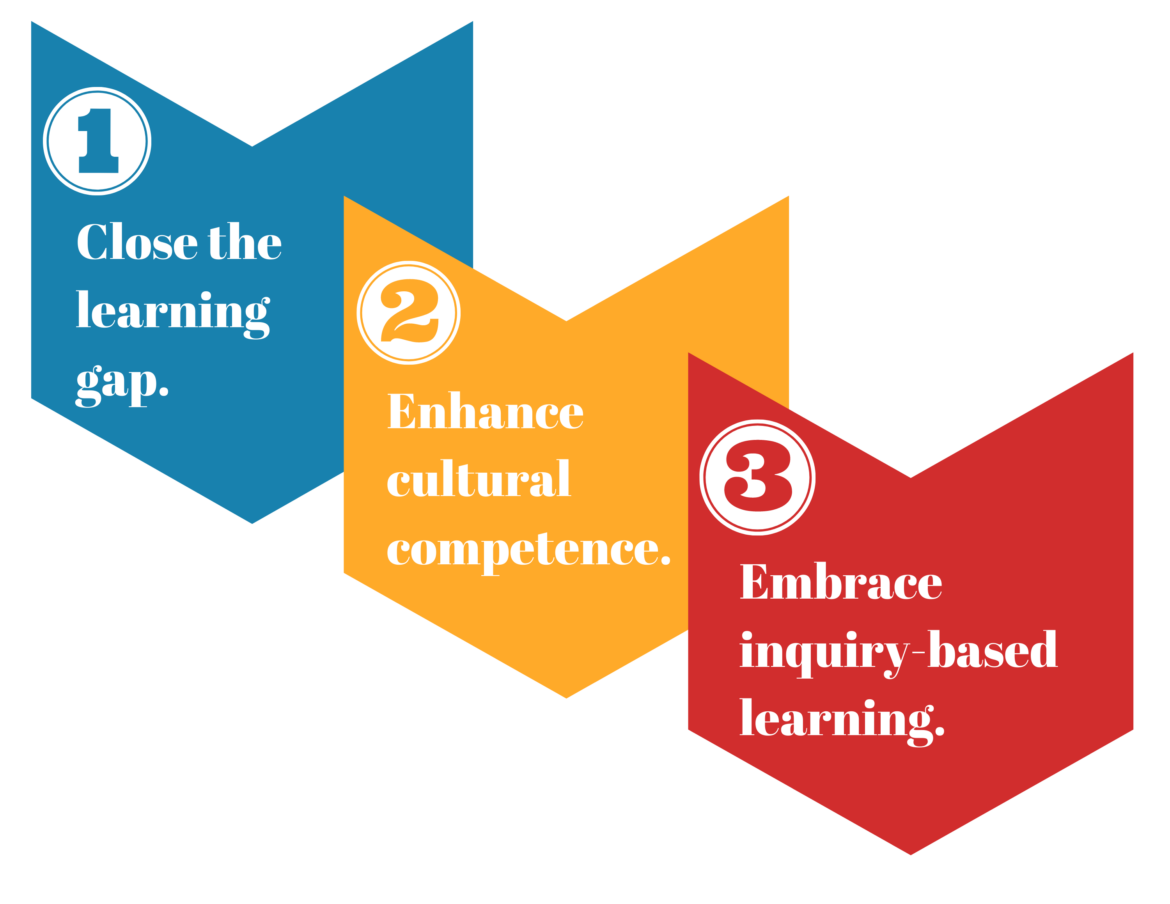“The largest and easiest gains in knowledge work come from redefining the task. They involve eliminating what need not be done,” says Peter Drucker. Didn’t get the results you want? Prune the unnecessary. Stop doing anything and everything that fails to move you towards those results. Are you a principal focused on achieving innovative learning? How you get there varies.
Getting to Innovation
Some leaders hope to accomplish innovation with technology. They want to achieve it through various strategies. Expensive options can include:
- Increased access
- More professional development
- Grabbing attention with media-catching projects
Today, leaders task themselves with a question to answer. That question is simple but tough to achieve. It is “How can you make meaningful growth happen with digital technology?” Here are a few ways to do that.
1. Close The Learning Gap
Close the learning gap, one implemented strategy at a time. You do it through the juxtaposition of technology and evidence-based, instructional strategies. Some focus on technical changes, but instead, they should focus on culture changes. Without culture change, instructional strategies and digital tools both fail.
Tina Peji (@TinaPeji_21) does a great job sharing instructional strategies that work in this video:
Given years of pandemic teaching and learning, we know this type of first-order change doesn’t work well. It leaves learners behind and decimates the ranks of educators. Both teachers and students get stuck. The mud at their feet? The jumble of best practices and digital tools dumped on them all at once.
A better approach to closing the learning gap? Transform the culture. Leverage social-emotional learning (SEL) activities. Embed those SEL practices in the context of a school culture that varies from campus to campus. Make changes consistent and incremental at the building level.

This requires relationship-savvy leaders. To begin, combine context-sensitive culture change with coaching. Include technology as an amplifier for teachers and learners. The preferred approach is the one that impacts attitudes and beliefs. This is a second-order change that can close the learning gap in the long run.
Using technology to measure student progress might be a first-order change. Second-order changes focus on attitudes and beliefs. Second-order goes to the heart of cultural norms and people’s shared values. It’s time to move beyond first-order issues to second-order. The smart leaders have done so. It’s the only way to close the learning gap and to build a bridge from where students and staff are now to where they need to be.
2. Enhance Cultural Competence.
To enhance cultural competence in schools, a way of valuing diversity among students and staff, take advantage of students’ cultures and abilities. Focus on amplifying positive experiences students have in school.
Juxtapose real-life events with technologies that amplify positive experiences. Use technology to create a rich platform for celebrating and sharing student success. Adopt the #TxEdTuesday approach of Tell It, Tag It, Share It. Not familiar with that approach or how to get started?
Explore specific strategies on how to showcase your school’s success online:
- Five Ways to Promote and Share Campus Ed Tech Success
- Storify Your Success: Six Tips for Instagram Wins
- Visual Storytelling: Portraits of Learning
- Culturally Responsive Teaching: Teachers as Allies in Growth
- Five Culturally-Responsive Instructional Strategies
The National Education Agency (NEA) recommends valuing diversity. To achieve this, highlight the advantages of students’ culture and abilities. The resources above can assist you in celebrating diverse backgrounds that support instructional practices.
3. Embrace Scaffolded Inquiry-Based Learning with Evidence-Based Strategies.
Build up student stamina for learning with evidence-based instructional strategies. These strategies are research-based. They rely on how current science shows the brain works. Strategies like The Jigsaw Method, Vocabulary Programs, Note Taking, Outlining and Summarizing, Classroom Discussion, and Retrieval Practice support foundational learning experiences. Get students to build foundational knowledge, filling in missing knowledge. With that, students can then start applying knowledge to new situations. Juxtapose real-world problems with digital solution-making. Use design thinking approaches (source) to perceive the world in new ways.
Here are specific steps aligned to evidence-based strategies via Mike Bell’s Evidence-Based Teachers Network (EBTN):

Go digital with collaborative, inquiry-based projects. Real-world learning works for students. It empowers learners to be hands-on, social problem-solvers as media-makers. Digital media, team-building, real-world problem solving work well. Team-building in small groups can lead to scaffolds that support instruction. This explicit, focused instruction aligns to student needs (source). Another approach relies on digital tools. Use technology to drive teamwork. Rely on one-on-one connections via culturally responsive teaching to support a student’s learning.
“Stop Doing” List
As Drucker says, redefining tasks and eliminating the unnecessary can yield the greatest gains. What this means in the classroom is simple. It can be fraught with angst and anxiety. We must identify what we do in the classroom. Then, with kindness, examine and discard only what fails to align with research. A great compendium of research to look at is Mike Bells’ six steps. Get a primer here.

